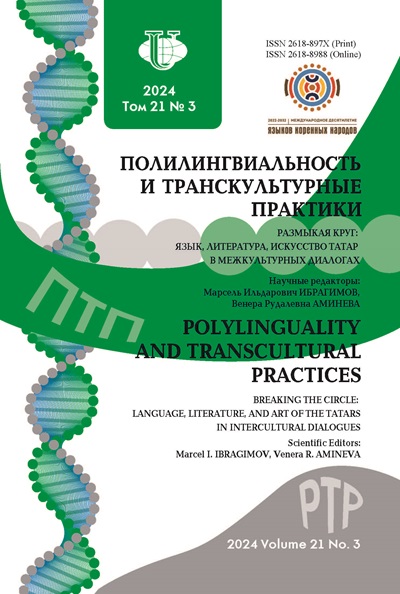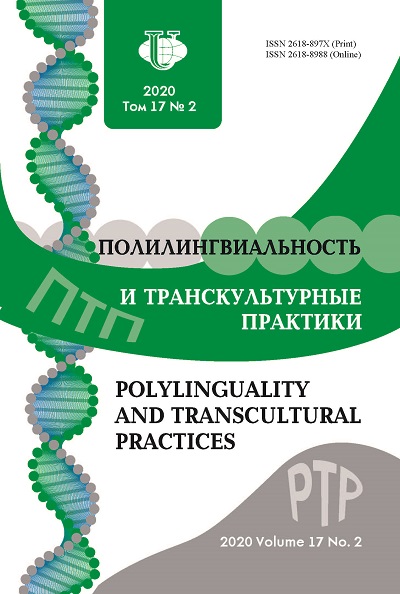Multilingualism in Digital Communication
- Authors: Mirzoyeva L.Y.1, Syurmen O.V.1
-
Affiliations:
- Suleyman Demirel University
- Issue: Vol 17, No 2 (2020)
- Pages: 168-175
- Section: Languages in contact
- URL: https://journals.rudn.ru/polylinguality/article/view/24070
- DOI: https://doi.org/10.22363/2618-897X-2020-17-2-168-175
Cite item
Full Text
Abstract
Digital communication is one of the typical features of modern society. The specificity of written communication in digital space (by means of such messengers as WhatsApp and Viber) determines various peculiarities of the process, such as conciseness, clear goal-setting and others. Nevertheless, code switching representing specific processes in the act of communication and linguistic consciousness of speakers takes place in such a specific communication mode in multilingual environment. The authors examined about 100 contexts showing code-switching process in a homogeneous environment among the communicants with the same social and educational status and having the elite type of speech culture. However, the communicants demonstrate mixing of linguistic units of at least two languages (Kazakh and Russian) as well as mistakes made due to interference.
About the authors
Leila Yu. Mirzoyeva
Suleyman Demirel University
Author for correspondence.
Email: leila.mirzoyeva@sdu.edu.kz
Doctor in Philology, professor of Suleyman Demirel University
1/1, Abylaykhan St., Kaskelen, 040900, Republic of KazakhstanOxana V. Syurmen
Suleyman Demirel University
Email: oxana.syurmen@sdu.edu.kz
Syurmen is MA in Education, senior lecturer of Philology Department of Suleyman Demirel University
1/1, Abylaykhan St., Kaskelen, 040900, Republic of KazakhstanReferences
- Kushakova, N.O. 2016. “Spetsificheskie zhanry sms-diskursa”. Kommunikativnye issledovaniya 1: 60—72. Print. (In Russ.)
- Heredia, R., and J. Altarriba. 2001. “Bilingual Language Mixing: Why Do Bilinguals CodeSwitch?” Current Directions in Psychological Science 5 (10): 164—168.
- Blom, J.P., and J.J. Gumperz. 1972. Directions in Sociolinguistics. The Ethnography of Communication. New York: Holt, Rinehart and Winston, Inc. Print.
- Gumperz, J. 1982. Discourse strategies. Cambridge: Cambridge University Press.
- Milroy, L., and P. Muysken. 1995. One speaker, two languages: cross-disciplinary perspectives on codeswitching. New York. Print.
- Appel, R., and P. Muysken. 1987. Language contact and bilingualism. London, Baltimore, MD: Edward Arnold. Print.
- Golovko, E.V. 1997. “Mednovskikh aleutov yazyk”. In Yazyki mira. Paleoaziatskie yazyki. Moskva: Indrik. S. 117—125. Print. (In Russ.)
- Golovko, E.V. 2001. “Yazykovye izmeneniya i konstruirovanie gruppovoi identichnosti”. SanktPeterburgskii nauchnyi tsentr RAN. Vestnik molodykh uchenykh. Seriya: Filologicheskie nauki 1: 3—10. Print. (In Russ.)
- Ulanovich, O.I. 2010. “Yazykovoe soznanie: osobennosti struktury v usloviyakh dvuyazychiya”. Vestnik Tomskogo gosudarstvennogo universiteta. Seriya: Filologiya 1: 44—52. Print. (In Russ.)















